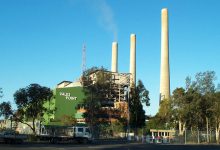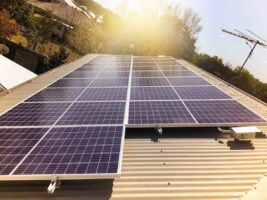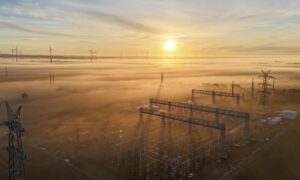Coal baron Trevor St Baker’s Delta Electricity has found itself at loggerheads with the renewables and storage sector, and much of the rest of the power industry, over its controversial proposals to pay coal generators like the one it owns to provide “system services” in the transitioning electricity grid.
Delta has proposed two significant rule changes that are among a basket of proposals being considered by the Australian Energy Market Commission in what is expected to be a highly significant ruling – with the first now due to be delivered on Christmas Eve, just as Australia packs up for the summer holidays.
Delta’s proposals are the most controversial of the package because opponents say they unfairly blame solar for grid problems, do not understand the potential of new technologies and appear designed primarily to feather the nest of existing coal generators.
They want the proposals dumped, or at least deferred so they can be dealt with as part of the overall re-write of market rules being undertaken by the Energy Security Board, which is looking at the creation of new markets to provide critical services such as inertia and fast frequency response and a rewrite of the market rules to make them suitable for a renewables dominated grid, rather than a coal based one.
St Baker’s Delta Electicity is the owner of the Vales Point coal generator it bought for $1 million from the NSW government, and which has since delivered nearly $100 million dollars in dividends to the owners in just the last two years, even as it asked for – and received – millions more in federal government money to “modernise” its equipment.
St Baker is a strong critic of wind and solar and his views have influence, particularly within the Liberal Party to which he donates. In its submission, Delta says solar is a big problem for the grid and it wants to create a new market for “ramping” services to help solve the issue.
But it has been shouted down by renewable and storage companies as self serving and unworkable, and designed only to support coal and gas generators.
Global electric vehicle and battery storage giant Tesla said Delta’s claims that solar was the sole cause of inflexible/slow-start response is “incorrect and over simplistic”, and accused it of having an “outdated view” of “asynchronous technology” such as wind, solar and battery storage.
“As proposed the rule change would have unnecessary and negative impacts on all assets aside from retiring synchronous generators,” Tesla said in its submission.
This view is shared by Enel Green Power, part of the giant Italian company Enel and the largest privately owned renewable energy company in the world, which said the rule requests also appear to have been crafted with little attention to technological neutrality.
“They appear focused on increasing potential revenue opportunities for conventional synchronous generation capacity. This is at odds with the direction of the energy transition which will see the share of synchronous generation in the power system continue to decline in a carbon constrained world.”
Tilt Renewables was equally blunt: “Delta Electricity have not kept with a technology agnostic approach as they have suggested that synchronous generators provide the ramping services whilst VRE (variable renewable energy, or wind and solar) generators foot the bill.”
Even Engie, the French energy giant that owned the Hazlwood coal generator and still owns gas assets in Australia, was dismissive of the Delta proposal, and a related rule change put forward by Hydro Tasmania.
“(They) appear focused on ensuring a certain level of synchronous generation, with the underlying implication that only this type of generation can provide system security. This may well be a reasonable working assumption today, but as techniques for managing systems as a whole and IBRs specifically evolve, it may cease to be.”
AGL, the largest coal generator in Australia, was also dismissive, saying its proposal was not “technologically neutral” as Delta has claimed. It rubbished Delta’s claims that it would result in an increased provision of system services, since it was designed to support supply from in-service generators.
AGL also rubbished Delta’s suggestion that wind and solar plants should pay for the services delivered by Delta’s coal generators under a “causer pays” system, saying the problem is largely created by the lack of flexibility in Delta’s own plant, and Delta should be the one that pays.
“In regard to Delta’s view that a causer pays principle may be appropriate for this rule, we note that the problem here exists due to the inflexibility of some thermal generation plant in responding to demand signals, therefore if the causer pays principle is followed it would follow that those receiving compensation under the service should be the ones paying for it.”
And, for good measure, the Australian Renewable Energy Agency suggests that the services proposed by Delta might be better offered by new technologies such as demand response and battery storage.
It pointed, in particularly, to its ‘super peak’ product developed by its Renewable Enegy Hub. “ARENA expects that products such as this could provide more bankable revenues for batteries and potentially demand response.”
Most respondents observed that Delta’s proposals would be unworkable in the transition to 5-minute settlements, which will favour and encourage fast-responding technology such as batteries, at the expense of slow moving machines like coal generators.
The Delta proposals are one of half a dozen different “system rules” that are being considered by the AEMC, and which could have a major impact on the future of wind and solar connections in the grid. The first of these, on system strength and the failed “do no harm” rules, will be decided on December 24, just as the industry packs up for summer holidays. We go into more detail here.
Tesla and Enel are supportive of another rule change proposed by Infigen Energy for a market for fast-frequency response, which could encourage more battery storage, which Tesla says can also create “grid forming inverters” and help with system strength.
“Indirect benefits can also flow through to the integration of storage if updating ‘do no harm’ provisions can remove current barriers to grid-scale renewable connections, and associated/co-located investments in battery storage assets by project developers,” Tesla said.
See also: Do no harm? How Australia’ss regulators fumbled the transition to wind and solar








